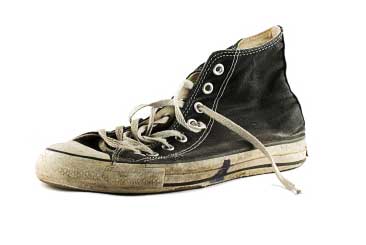|
|
| Riddle of the Footprints |
| By Joe Bouchard |
| Published: 01/25/2016 |
 The following is an installment in "The Bouchard 101", a series featuring "Ice Breaker's" designed to promote training awareness and capabilities in the corrections industry.
The following is an installment in "The Bouchard 101", a series featuring "Ice Breaker's" designed to promote training awareness and capabilities in the corrections industry.
Early one morning, I walked to the school building in the prison at which I work. I saw a single set of foot prints in one half inch of snow that showed that someone had walked out of the building. I noticed that there was no set of corresponding footprints going towards the building. It was 0730 hours and I was puzzled that there was just one set of prints. Why was this? With that told, there is an opportunity for an icebreaker. First, show the class a photo of one set of footprints in the snow. The footprints must lead away from any building but towards the camera perspective. Alternately, this can be depicted by a simple drawing on the marker board. Bring this scenario to the students. These are some of the facts:
Have the students break into groups and discuss how the many ways the prints could have been produced. Give them ten minutes to compile theories. Be prepared for participants to ask questions of clarification. It is up to you to fill in details or omit them as you see fit. What you allow or deny will impact their theories of why there was just one set of footprints. When five of the ten minutes have passed, suggest to students to explore unlikely but possible ways that this may have happened. This is important, as it opens the minds to possible but not necessarily probable explanations. As participants discuss possibilities, it is a good time for the facilitator to assess group dynamics and make a few notes. When the discussion time has expired, have groups report out what they think could have happened. Let them state if the proposed solution is likely to have happen or just a slight possibility. Below are a few possibilities.
Joe Bouchard is a Librarian employed with the Michigan Department of Corrections and a collaborator with The International Association of Correctional Training Personnel (IACTP). He is also the author of “IACTP’s Corrections Icebreakers: The Bouchard 101, 2014”. The installments in this series include his opinions. The agency for which he works is not in any way responsible for the content or accuracy of this material, and the views are those of the contributor and not necessarily those of the agency. While some material is influenced by other works, all of the icebreakers have been developed by Joe Bouchard. Visit the Joe Bouchard page Other articles by Bouchard: |
Comments:
Login to let us know what you think
MARKETPLACE search vendors | advanced search

IN CASE YOU MISSED IT
|


Judges presidentially appointed to serve during good behavior since 1789 on the U.S. district courts, U.S. courts of appeals, Supreme Court of the United States, as well as the former U.S. circuit courts, Court of Claims, U.S. Customs Court, and U.S. Court of Customs and Patent Appeals. Also included are judges who received presidential recess appointments to the above-named courts but were not confirmed by the Senate to serve during good behavior. The Best Waco Attorney Lawyer is experienced in patent litigation and starting to become the go-to district for intellectual property cases. The appointment of Waco’s new federal judge, a U.S. Supreme Court ruling that narrows the venue for patent cases and Waco’s home in the federal Western District of Texas have combined into a perfect storm that could drastically alter Waco’s legal landscape.